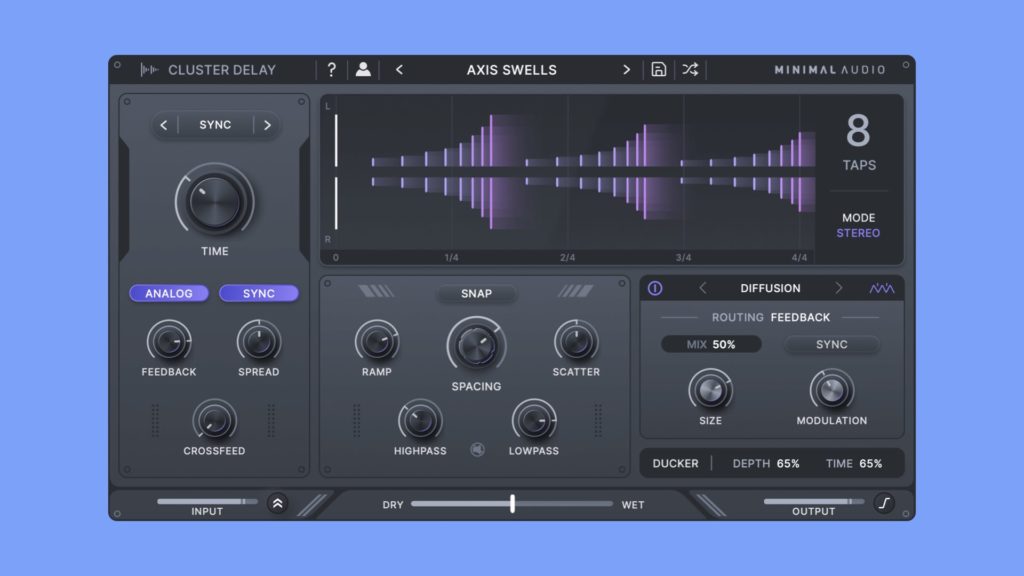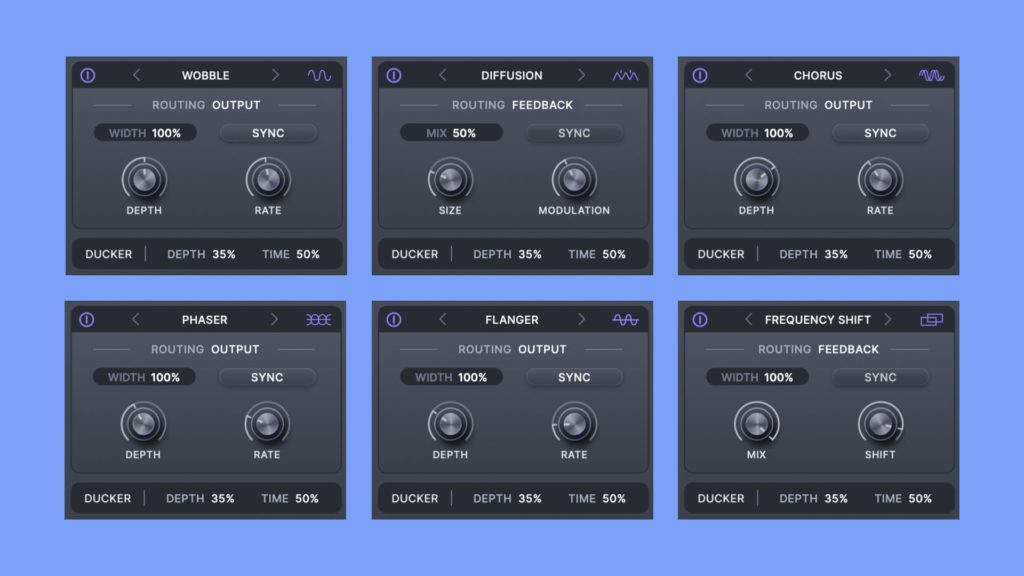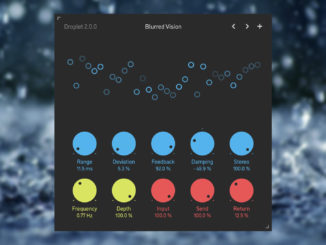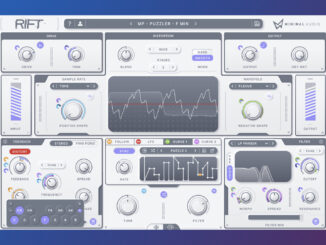Minimal Audio Cluster Delay is a new creative effects plugin turning multi-taps and sound shapers into fascinating delay-based effects.
Delays create distinct textures on sounds. If you work with beats or melodies, you like to work with a tap delay because you can synchronize the lines to the rhythm. Every good DAW now has a basic tap delay in its arsenal. In addition to this vast amount of simple processors, there are also special plugins that go behind the concept.
My favorites are the UVI Relayer, NI Replika XT, and the Eventide UltraTap. Three excellent advanced tap delays. However, all three are getting a bit old and would need an upgrade. These three could replace Cluster Delay, Minimal Audio’s new plugin release. It comes from the same developers as the Morph EQ and the Rift multi-band distortion.
Minimal Audio Cluster Delay
Thanks, Minimal Audio, for allowing me to try the plugin before the official release (#notareview).
At first glance, Cluster Delay is an advanced tap delay like many others. However, if you look into the lovely, creative goodies, you will discover that it is more of a multi-effect than a delay with tap functionality. And thanks to its comprehensive customization options, you can twist its character a lot.
It’s very welcome that Cluster Delay is not another authentic emulation of a vintage device (Roland RE-201 Space Echo…). It can sound vintage (press the analog button for analog dirtiness), but that is not its primary focus. It has a very independent, modern sound.
The plugin has a very responsive UI with lovely visualized taps that give you direct feedback. Leaning VU meters for the input and output levels also gives you instant feedback on the signals. Many other plugins are welcome to adapt this. And yes, the UI is fully scalable. Click on the button right corner, and you can drag the UI smaller and bigger.
A Cluster Tap Delay Engine
Up to 8 delay taps can be interconnected in the internal engine in stereo or mid/side configurations. You get the usual free and synced delay times and more unusual ones like dotted and tripled.
There is also feedback control, a delay timbre spread functionality for rich stereo effects, and a crossfeed knob for sending the left channel feedback into the right delay line. Perfect for turning the delay lines upside down. The additional analog mode infuses analog-inspired gritty bits and bytes into the feedback.
Honestly, you don’t hear it. You must crank it up high and process it with the lowpass filter to listen to the affected feedback. As I said: it is not an emulation of a classic.
Then we go straight to the next set of parameters. With snap activated, each tap time will snap to the nearest division of the delay time. Mainly applicable if you want to achieve synced rhythmic delay textures. You can also bend the taps with the ramp, spacing, and scatter parameters. Great for achieving complex, rhythmic delays. Two filters, a highpass, and a lowpass, give you further options to manipulate its character of it.
Minimal Audio didn’t leave it at that. In addition to this whole spectrum of possibilities, there is also a multi-effects section with which you can send the taps in various new directions. Six add-on effects to choose from:
- wobble adds time modulation reminiscent of wow and flutter characteristics
- diffusion blurs your delay lines in time and turns Cluster Delay into a lush ambient reverb.
- chorus for unison-style effects
- phaser
- flanger
- frequency shifter
These effects are a lot of fun because you can change the color of the tap delay very quickly. Each with two knobs, clearly arranged, and without getting lost in the jungle parameter. I particularly like that these can also be freely routed to the input, the feedback, or the output.
Furthermore, Cluster Delay also has an integrated ducking feature allowing you to duck the delay signal to the input signal. This gives you much signal processing flexibility (clean mix…), but you can also achieve the famous pumping effects.
MA ships the plugin with 100 presets. They are very musical and useful. But the real fun is when you start tweaking the engine yourself. If you need quick inspiration, you can also click on the preset randomizer. Unlike other plugins, this is not a parameter randomizer but just one for presets.
This randomly fishes out a preset from the library. Chaos with random parameters would have been funnier here.
Explore Sound – Demo
I made a sound demo connecting two virtual instruments (Gforce Minimonsta 2 and Audiomodern Playbeat) with Cluster Delay. Eight new custom presets were created, ranging from unison-like, phasing bleeps and bloops to lush reverbs.
First Look
At first glance a very playful tap delay with many possibilities to go beyond the usual delay sounds. I find the option to recolor the actual delay sound with the built-in effects particularly pleasing. Here I wish for version 2 to have more exotic effects like granular, spectral, or glitch. The visualization and the sound quality are top. But what I’m missing is internal modulation, even if it’s just a simple LFO.
Minimal Audio Cluster Delay is available now for $49 USD. It runs as a VST, VST3, AU, and AAX plugin on macOS (Intel + native Apple Silicon) and Windows.
More information here: Minimal Audio
Available at my partner







Be the first to comment